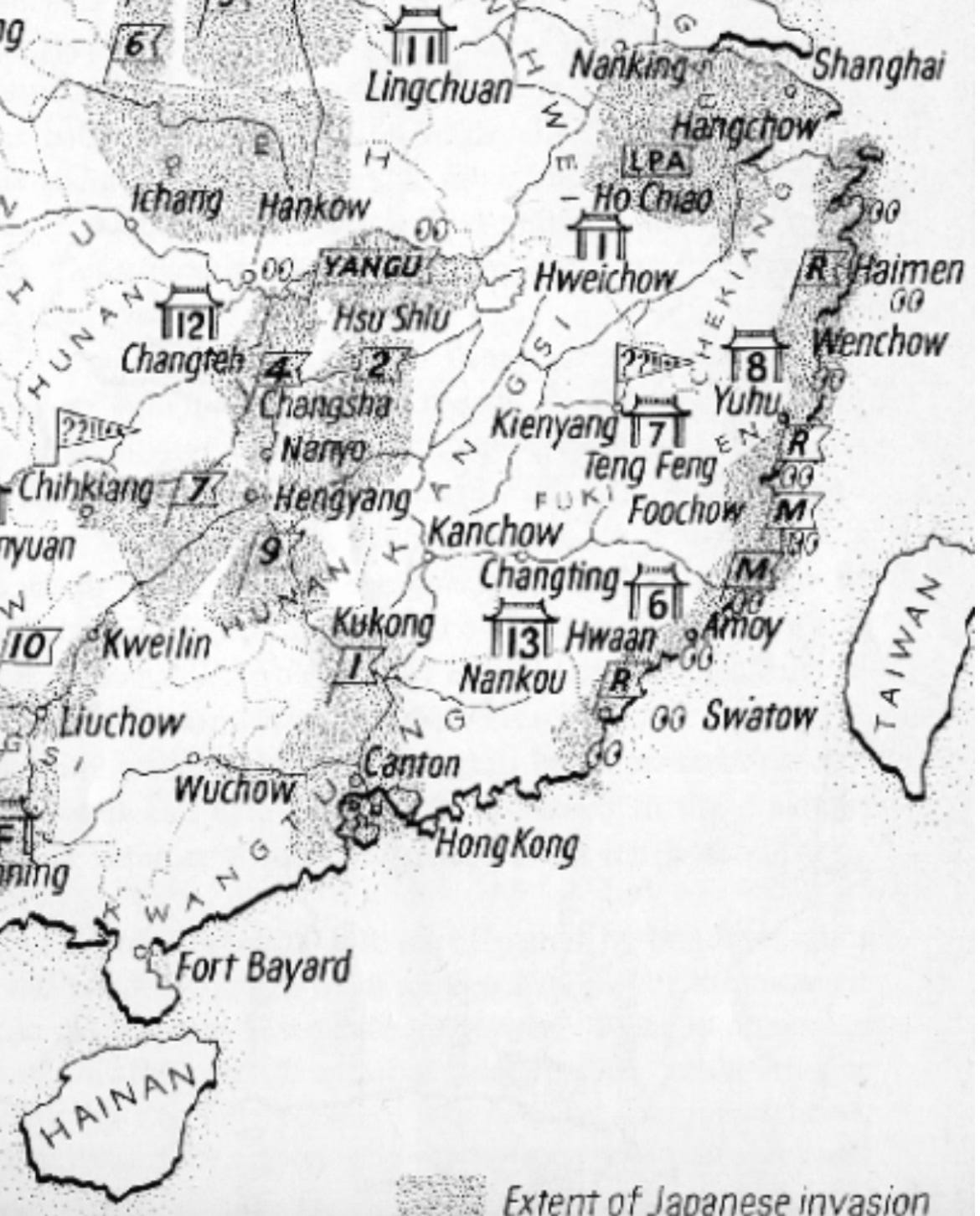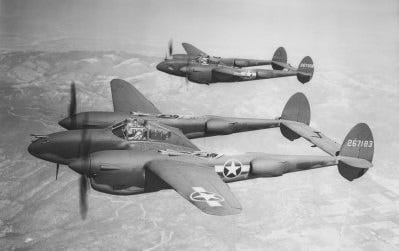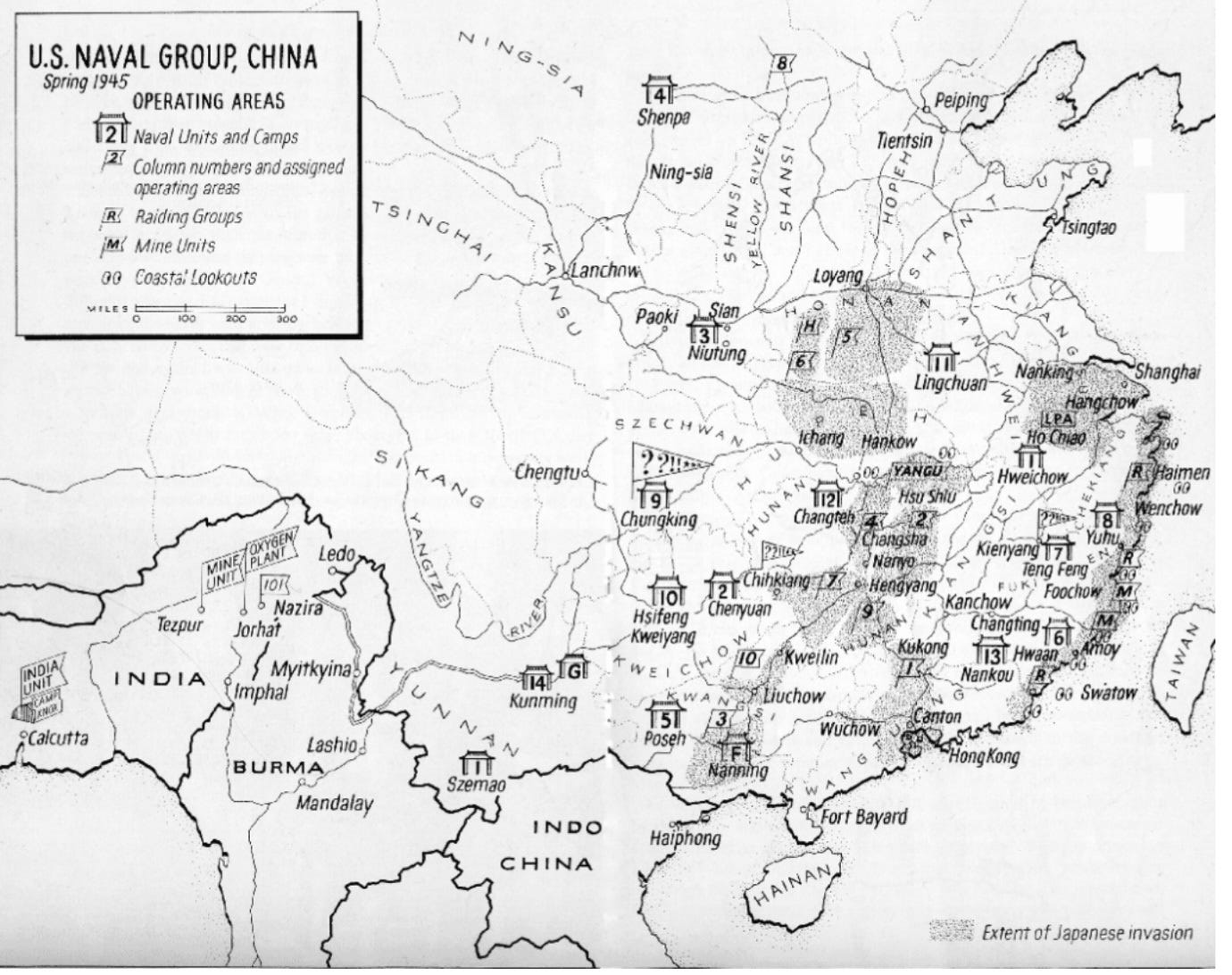
Peter and Richard Kim unknowingly entered a hub of U.S. military intelligence in China when their escape party from Shanghai arrived in Shaoguan. Guangdong’s wartime capital, then called Kukong, was one of the forward operating areas of the Sino-American Cooperative Organization (SACO), a U.S.-Chinese intelligence group operating behind Japanese lines.

SACO was one of the main U.S. intelligence organizations operating in China during the Second World War. Created in 1942 under the command of General Tai Li, Nationalist China’s intelligence chief, and U.S. Navy Captain (later Rear Admiral) Milton Miles, SACO established a network of base camps around China where U.S. sailors and Marines trained Chinese guerillas to operate behind Japanese lines. At its peak, SACO had almost 3,000 U.S. Navy, Marine, and Coast Guard personnel and tens of thousands of trained and organized Chinese guerillas. “Rice Paddy Navy” became a nickname of SACO, which operated hundreds of miles from the sea.
In the summer and fall of 1944, Kukong was expected to be attacked by Japanese forces in Hong Kong and Canton (now Shenzhen) as part of Operation Ichigo. The city was at the crossroads of the railroad from Canton to Hengyang, the next objective of the Japanese forces that had captured Changsha in mid-June, and roads heading northeast to Shanghai. Refugees were flooding Kukong, trying to board trains to flee ahead of the Japanese advance. U.S. military intelligence officers were also passing through the city, going the other way toward trouble.
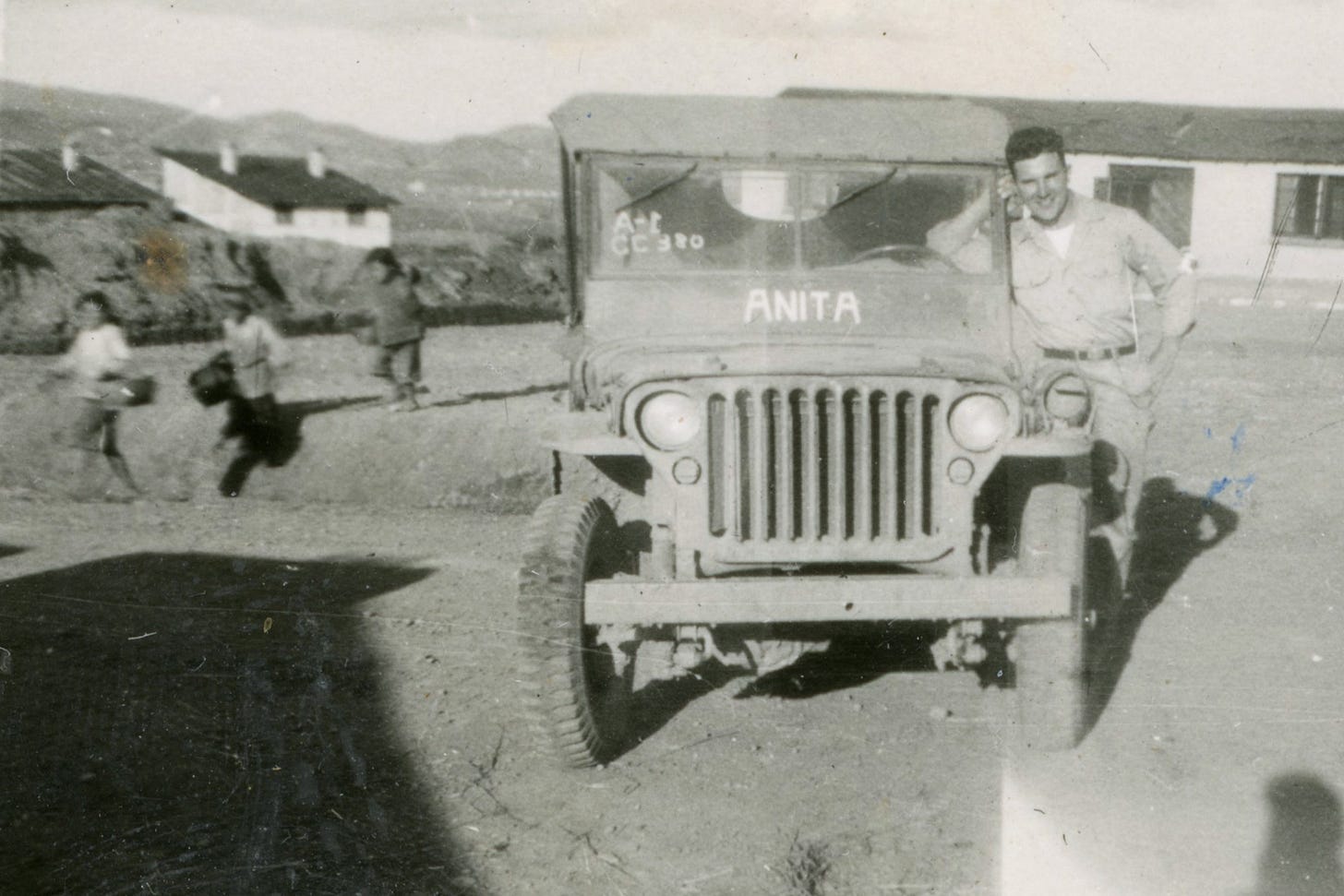
Peter and Richard spotted one when they noticed a small green motor vehicle, of a type that they had never seen before, on a street in Kukong. It was a jeep, and behind its wheel was a U.S. Navy officer whose face was familiar from years earlier in prewar Shanghai. He was Lieutenant Ralph Morgan, who before the war had been a Chief Petty Officer stationed in Shanghai.
Morgan was now with SACO, and after he and Peter recognized each other and talked about the strange coincidence of meeting randomly in the middle of a war, the intelligence officer debriefed Peter about his journey from Shanghai and what he had seen along the way. Morgan then got back into the jeep and drove away, in a hurry to resume his mission.
Soon afterward, a stranger tapped Peter on the shoulder and asked for him by name. Terrified that Japanese intelligence or its Chinese puppet agents had found him, Peter signaled for Richard to run away, which he did. The stranger told Peter that there was a man who wanted to see him and pointed to the door of a house. Peter walked through the door, expecting the worst.
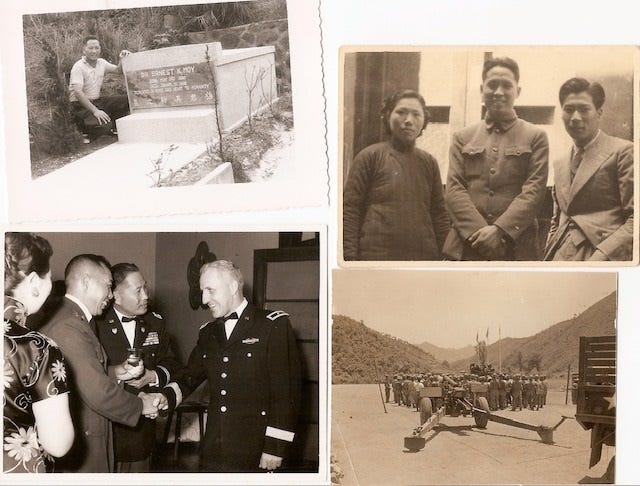
Inside Peter was relieved to find another person familiar to him from prewar Shanghai: Jack Young. A Chinese-American who had moved to Shanghai in the 1920s, Young was related by marriage to Peter’s girlfriend Ruth Moy, having married a niece of her estranged husband Ernest Moy in 1933. Young had joined the Nationalist Chinese armed forces after Japan invaded China in 1937, then faced a mandatory recall to the U.S. for military service after the attack on Pearl Harbor. He was now a U.S. Army lieutenant and intelligence officer, one of only a few capable of blending in and operating clandestinely in China.
Young was on a secret mission to Shanghai, moving along the same route that Peter and Richard had used, in the opposite direction. He had recognized Peter in the street and figured that he was likely to have useful knowledge of the route to Shanghai. Young was right, and he got even more than he had hoped for. Peter told Young all about the railroad, river, and overland routes that he and Richard had taken from Shanghai. Then he gave Young his and Richard’s Pao Chia certificates, the identity cards issued by Japan’s Chinese puppet regime, which they no longer needed. With the cards, Young would be able to travel on Japanese-operated trains to Shanghai, using the identity of Peter Kim.
Having done all that he could to help Young, Peter parted ways with him and went with Richard to resume their journey to free China. With time to kill while waiting for a train out of Kukong, they went for a walk outside the city, away from the crowds. They were walking through a field when they spotted in the sky what looked like a formation of four fighter planes, headed toward them. As the aircraft drew nearer, they saw that the four planes were actually two, each with twin engines and tail booms that from a distance looked like two planes flying close together.
A burst of machine gun fire made them think that the approaching aircraft were Japanese fighters closing in to attack, but the shooting immediately stopped. Peter and Richard saw Chinese civilians rushing into a nearby field that looked like a rice paddy and placing small pennants into the ground. The two aircraft descended and landed amid the pennants in what was clearly hard ground, camouflaged to look like a rice paddy. Peter and Richard ran toward the field to see what was happening there.
There they found two P-38 Lightning fighters and a U.S. Navy officer directing the Chinese ground crew. The pilots of the P-38s, unworried at being among friendly civilians, struck up a conversation with Peter and Richard, explaining that they had been on a long-range reconnaissance mission around Hong Kong and were stopping to take on more fuel before returning to base. Peter, in turn, told them about his and his brother’s long journey from Shanghai and their goal of finding an American forward airbase.
The fighter pilots then made an unbelievable offer: that Peter and Richard join them. Behind each P-38’s cockpit was a compartment for the plane’s radio, whose small empty space was normally used to carry the pilot’s personal items, but which a person could barely squeeze into in an emergency. The pilots offered to dump their gear so that Peter and Richard could fly with them back to their base.

The offer was so hard to believe that Peter thought that they must be mistaking him and Richard for Chinese pilots downed during a similar long-range mission to Shanghai, whom they would want to rescue out of comradeship.
It was a tantalizing opportunity to reach their destination in only a few hours, but Peter and Richard had never been in an airplane before, and crammed into the tiny rear compartments of the P-38s looked like a terrifying way to fly for the first time. They politely declined, saying that they had to stay with their group from Shanghai. They ended up watching as the pilots returned to their refueled planes, fired up their engines, and took off and flew away toward the west.
Peter and Richard returned to Kukong and rejoined their group from Shanghai for the next stage of their journey: a train packed with refugees. With every bit of space inside and on top of each rail car filled with people, Peter and Richard rode outside on the steps, locking their arms around the handrails so that they would not fall off the train if they fell asleep from exhaustion.
The train was headed north to Hengyang, toward the northernmost U.S. airbase in China. After their encounters in Kukong, Peter and Richard had reason to hope that they would find what they were looking for at the end of the line. The appearances of old acquaintances from Shanghai who had made it into the U.S. armed forces, followed by the astounding generosity of the American pilots toward total strangers, were signs that good things would happen if they could reach their destination. But first they would have to get there, with Japan’s Operation Ichigo offensive advancing unstoppably toward it.
The SACO veterans organization (website: https://saconavy.net/) is producing a SACO documentary. A trailer for the documentary can be seen at this link.
This series previews my upcoming book Victory in Shanghai: A Korean American Family’s Journey to the CIA and the Army Special Forces, whose publication is expected by June 1, 2025. You can pre-order it now through Potomac Books, an imprint of the University of Nebraska Press, at this link, or through your favorite local independent bookseller.
Subscription to this series is free.
If you know anyone who may be interested in this series, please share it with them.




